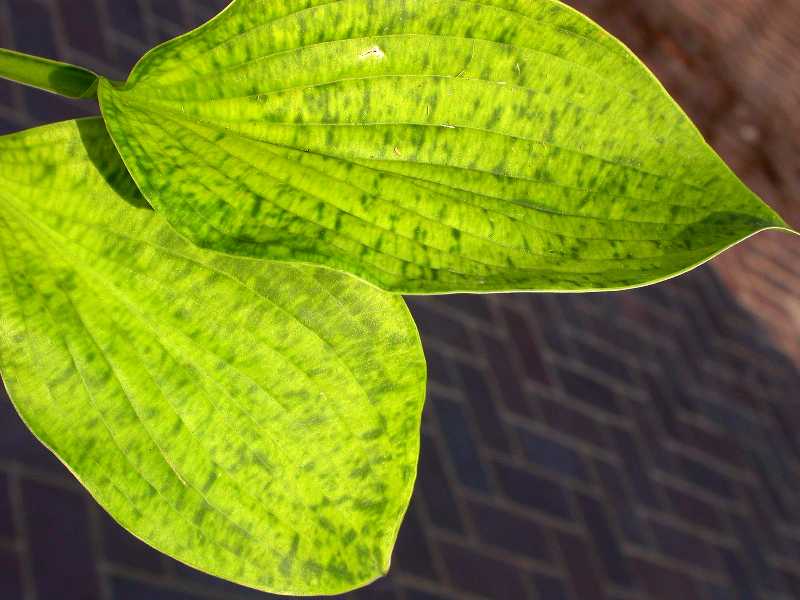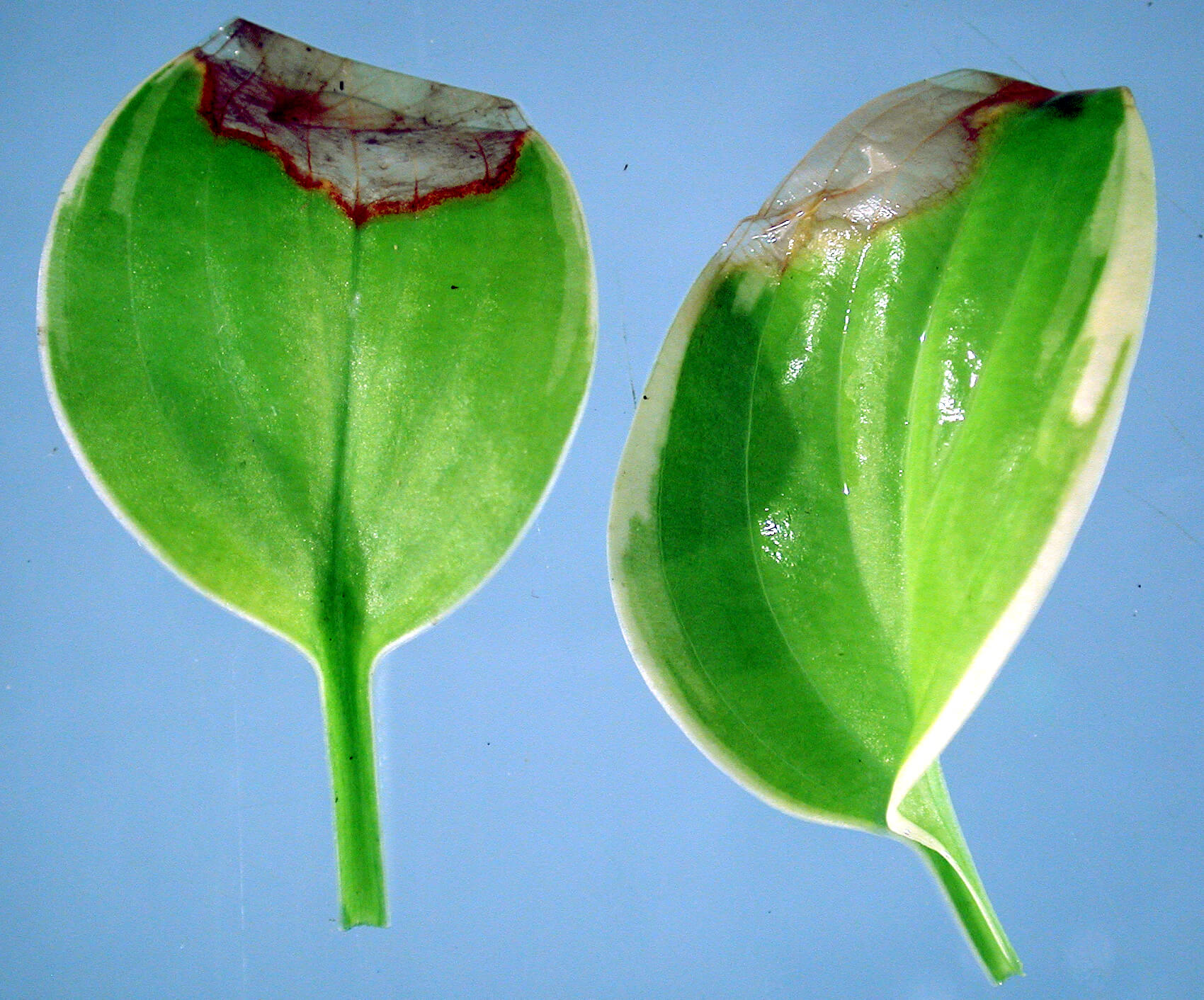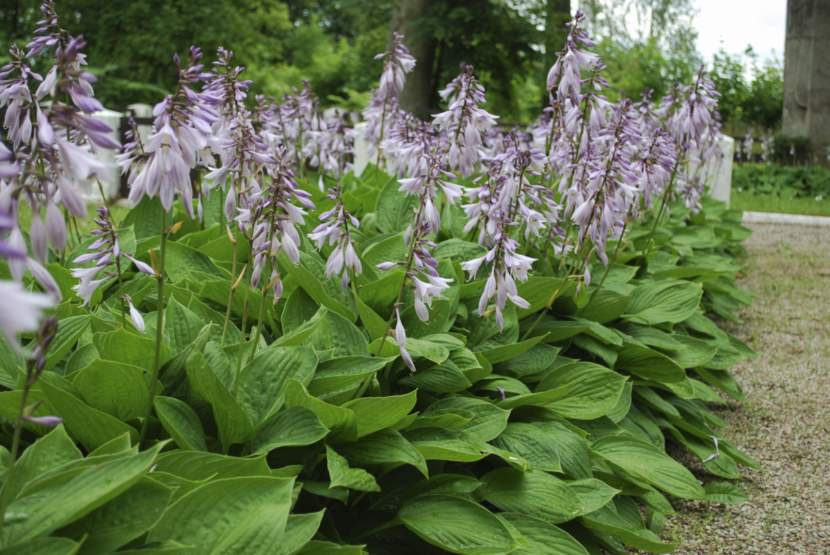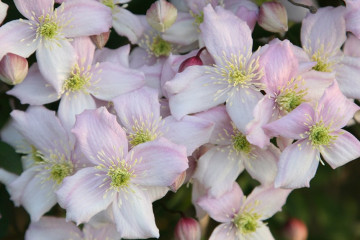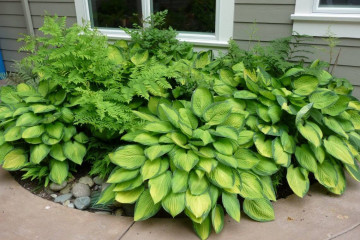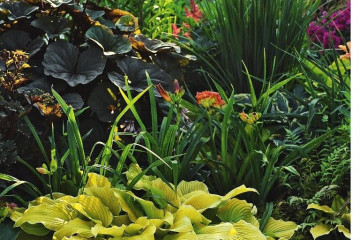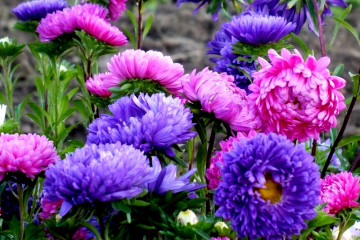Diseases of hosts
Content:
Hosts are indispensable for filling and decorating shaded areas of the garden. Bulky bushes from miniature (up to 15 cm) to giant (over 1 m) are valued for their unpretentiousness and variety of foliage colors. Some varieties bloom remarkably beautifully and have a strong aroma.
Diseases of hosts
The state of health of a plant can be determined by the state of its foliage. In hosts, its decorative effect may suffer due to several factors:
- excess sunlight;
- frost damage;
- pests;
- disease.
A stained, yellowed, drying leaf often speaks of illiterate care, non-observance of the rules of agricultural technology by the hosts.
The plant prefers to grow in shady and humid places. No wonder landscape designers design host plantings near artificial reservoirs in Japanese gardens. On hot days, the wide leaves of a perennial evaporate a significant amount of liquid, so regular additional watering is required.
In order not to cause sunburn to the foliage, watering is carried out in the morning hours or after sunset. When moisture drops hit the leaf surface, they serve as lenses for sunlight.
Garden plants in summer cottages can suffer from recurrent spring frosts when the leaves are just beginning to hatch.
Deficiencies in care can be easily corrected; in the case of certain diseases, there is a threat of losing the plant and infecting the rest of the plantings.
Viral diseases
Viral diseases are difficult to control, they are transmitted by insects, wind, through contaminated soil. Plants begin to wither, grow slowly, and gradually die. In most cases, sick perennials must be destroyed.
Hosta X Virus
Hosta virus X was identified by American botanists. The danger of a virus is the difficulty of diagnosing it. The plant can grow, be a carrier for a long time, infecting other valuable host varieties. It is interesting that the peculiar color of diseased plants was at first taken by breeders as a varietal feature. So, some infected specimens were recognized as independent varieties (Break Dance, Speckled Fantasy, Pamela Ann, etc.).
Damage to the plant has the following consequences:
- growth retardation;
- foliage deformation: thickening, thinning, scaly growths (enations), wrinkling, twisting;
- white color uncharacteristic for a particular variety, discoloration, fuzzy spots and stripes, the leaves of the hosta turn yellow;
- partial necrosis and death of the plant.
Control methods:
- a diseased plant must be dug up and destroyed;
- hosts that grew in the immediate vicinity are quarantined for up to a year;
- the area where the infection was found should be disinfected and for a while refrain from any planting on it.
Tobacco rattle virus
The causative agent Tobacco Rattle Virus (VPV) parasitizes the cells of vegetable and ornamental crops (potatoes, daffodils). Its carriers are leaf nematodes, which harm the host no less. Symptoms of a virus infection:
- infection of a young plant leads to growth disruption;
- deformation of shoots and foliage;
- specks on the leaves uncharacteristic for this variety, discoloration of individual sections of the leaf plate, necrotic spots.
Work with an unclean tool can become the cause of infection with VPT. The virus contains the juice and seeds of diseased crops.
Leaf curl virus
The characteristic feature of hosta leaf disease reflects the name itself. The disease comes from the pelargonium virus, which is obtained by a strain of tomato curl virus. The degree of damage depends on the resistance to it of the variety. In cells infected with a virus, the growth function is disrupted, therefore, uneven development is manifested by the following signs:
- foliage is deformed, looks curved, wrinkled, tears appear;
- small stellate spots, compacted to the touch, are clearly visible in the light;
- at a later stage, the tissues inside the spot become necrotic and spill out.
You will have to get rid of the affected plant.
Fungal diseases
Diseases cause spores of pathogenic fungi. It is possible and necessary to fight them, for this there is a huge selection of fungicidal preparations, there is a century of experience in fighting with the help of folk remedies.
Phylosticosis
Among the reasons why the hosta turns yellow is called the fungal disease phyllostikosis. The disease can be recognized by the following signs:
- the leaves are covered with brown-yellow spots, over time they spread over the entire surface;
- later, fungal spores, having multiplied, form a plaque;
- in the process of infection, the flower stalks of the hosts are also damaged.
If you do not start to treat the plant and the soil around it in a timely manner, the affected perennial dries up quickly, the tissues in the center of the spot spill out and form holes. To stop the disease, the damaged parts of the plant are removed. The plant is treated with a systemic fungicide.
Anthracnose
The disease is more common in gardens. Fungal spores mature on the leaves of fruit trees and garden crops. The causative agent rapidly infects the aerial part of the host.
Typical signs:
- on the surface of the leaves, spots from purple-brown dots can gradually grow, filling the entire plate;
- the tissues inside the stain are mummified and fall out, a hole remains on the sheet;
- at a later stage of the disease, the dried leaves fall off, leaving only the stems at the surface.
It is impossible to cure the plant, so all that remains is to destroy it.
Root rot
The reason why the hosta leaves turn yellow may be root rot. The disease is also called crown rot according to the way it spreads, since the disease first affects the outer leaves.
Infection symptoms:
- the edge of the leaf is covered with yellowing, but its structure and density remain the same;
- at the base of the root collar, the stem softens, large sheets break off under their own weight;
- upon close examination, you can find the mycelium of the pathogen - white threads;
- at a later stage, the root collar is covered with light brown grains of mycelium, similar to miniature mushroom caps.
If the host turns yellow, what to do in this case, do not panic in the first place. To protect it, you must:
- At the first sign, remove all affected leaves.
- The plant is dug up, the roots and root collar are cleaned from rot (to healthy tissue).
- Before transplanting, they are left to dry in the open air.
- Treat with fungicide.
- They are planted in a container with clean, non-contaminated quarantine soil.
Dig it out carefully. If the plant growth point is intact, then the affected hosta can recover.
Rust
The rust fungus is more likely to attack yellow-bordered hosta varieties. Mycelium develops in the heat due to lack of moisture. The disease in its symptoms resembles a sunburn, the leaves can turn yellow and mummify. In fact, rust inhibits cellular metabolism and disrupts photosynthesis. In this case, the plant needs to provide optimal lighting and humidity conditions.
Gray rot (botrytis)
The fungus Botrys Cinerea spreads to fruit and ornamental crops. Spores infect mechanically damaged parts of the plant; this is a characteristic feature of the disease. First of all, the tips of the leaves of the hosta dry, gradually covering the entire surface. The diseased plant is covered with a fluffy gray bloom. To avoid complete damage to the bush, you need to disinfect the infected area. For processing, you can make a dusting with crushed activated carbon or wood ash.
Sclerotiniasis (Sclerotinia)
The causative agent - sclerotinia fungus - forms threads similar to cotton. The root collar of the plant is affected by the disease. It is impossible to save the bush, all that remains is to remove it.
Bacterial disease soft rot
It is spread by bacteria in the damaged areas of the hosts. The plant is more often affected by temperature changes.
The first sign of the disease is the characteristic rotten smell. The cause of its appearance may be the decay of the lower part of the plant. Hosta leaves are covered with dark brown spots.
For the successful treatment of ailments that are caused by bacteria and fungal spores, you must follow the basic rules:
- adhere to the planting scheme, taking into account the needs of varieties for lighting and humidity;
- regularly inspect the aerial part of the plant in order to identify the problem in time and begin treatment;
- remove damaged parts from the bush and burn to prevent contamination of other varieties and crops;
- tools and equipment are cleaned and disinfected before working with each plant.
Fungal diseases are always easier to prevent with preventive treatments than to fight against their spread. To protect and prevent the garden, plants and trees are treated with fungicidal or biological preparations:
- in early spring (before the start of sap flow);
- in the fall (after the foliage has fallen).
One of the priority directions in breeding work is to increase the resistance to diseases in varietal hosts. To reduce the risk of diseases, you should purchase seedlings in proven online stores and nurseries, pay attention to the characteristics of the variety you like.
Why host grows poorly
It happens that a healthy plant for no apparent reason freezes in growth, does not release peduncles, and over time begins to wither. There can be many reasons why the host grows poorly. In addition to diseases and improper care, pests interfere with the growth and development of the host.
Mouse
In winter, vole mice use mulch and snow to walk and gnaw at roots. Rodents settled in the garden are lured into traps, destroyed with the help of chemicals. You can ward off pests with plants, the smell of which scares them away;
- garlic;
- imperial hazel grouse;
- black root.
Slugs
Molluscs eat the lower leaves of the host to the holes; hosts with thin, delicate foliage are especially affected. Slugs can completely destroy young foliage without treatment, leaving only the petioles.
Traditional methods of pest control:
- in spring, during active growth, the bushes need to be covered;
- traps for slugs are installed on the site, you can use both special preparations and containers with beer;
- scatter tobacco, wood ash, superphosphate near the hosts.They will significantly complicate the pest's access to the leaves.
Leaf nematodes
Small up to 2 mm round worms disfigure the leaf blade with characteristic brown lines and spots. At an early stage, the lesion is not detectable. To make sure that the reason why the host is not growing is due to nematodes, a simple test will help. A crushed sheet is dipped into a glass of water for 15-20 minutes. If suspicions are justified, the worms can be seen in the water in the light.
It is difficult to fight worms, the drugs destroy adults, but not their eggs. For the extermination of the pest, developers offer bioassay, for example, nemabact and nematophagin.
For the trouble-free maintenance of perennials, it is necessary to adjust the irrigation regime, the plant grows poorly without proper moisture.
It should be understood that the peak of the decorativeness of the hosts falls on the early summer (May-June).
Hosta flowering is postponed or does not occur at all for the following reasons:
- the problem variety in terms of flowering time is referred to as late flowering and it simply does not have enough time and optimal temperature;
- the bush has grown greatly, it is cramped and lacks nutrition. This is one of the main reasons why the hosta does not bloom;
- The hosts are shade-loving, but for the growth and formation of the peduncle they need rarefied light for several hours a day.
Hosta is a wonderful plant. She is unpretentious and responds gratefully to leaving. Its application in gardens is universal. Traditional medicine uses the color of the hosta to heal wounds, and the Japanese people consider the young shoots a delicacy. If you create the required conditions for the host, the plant will certainly thank you for its care with exquisite flowering.

